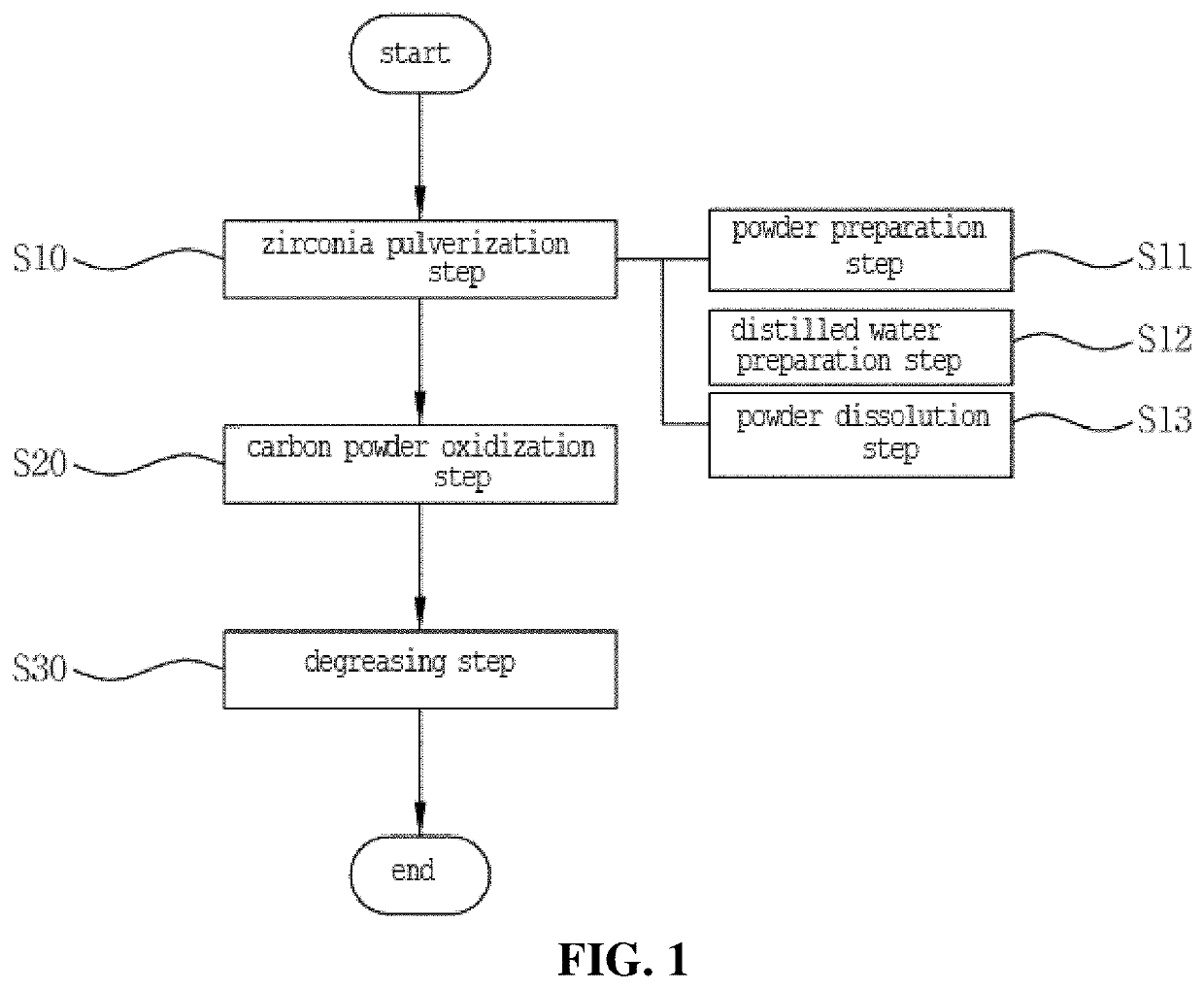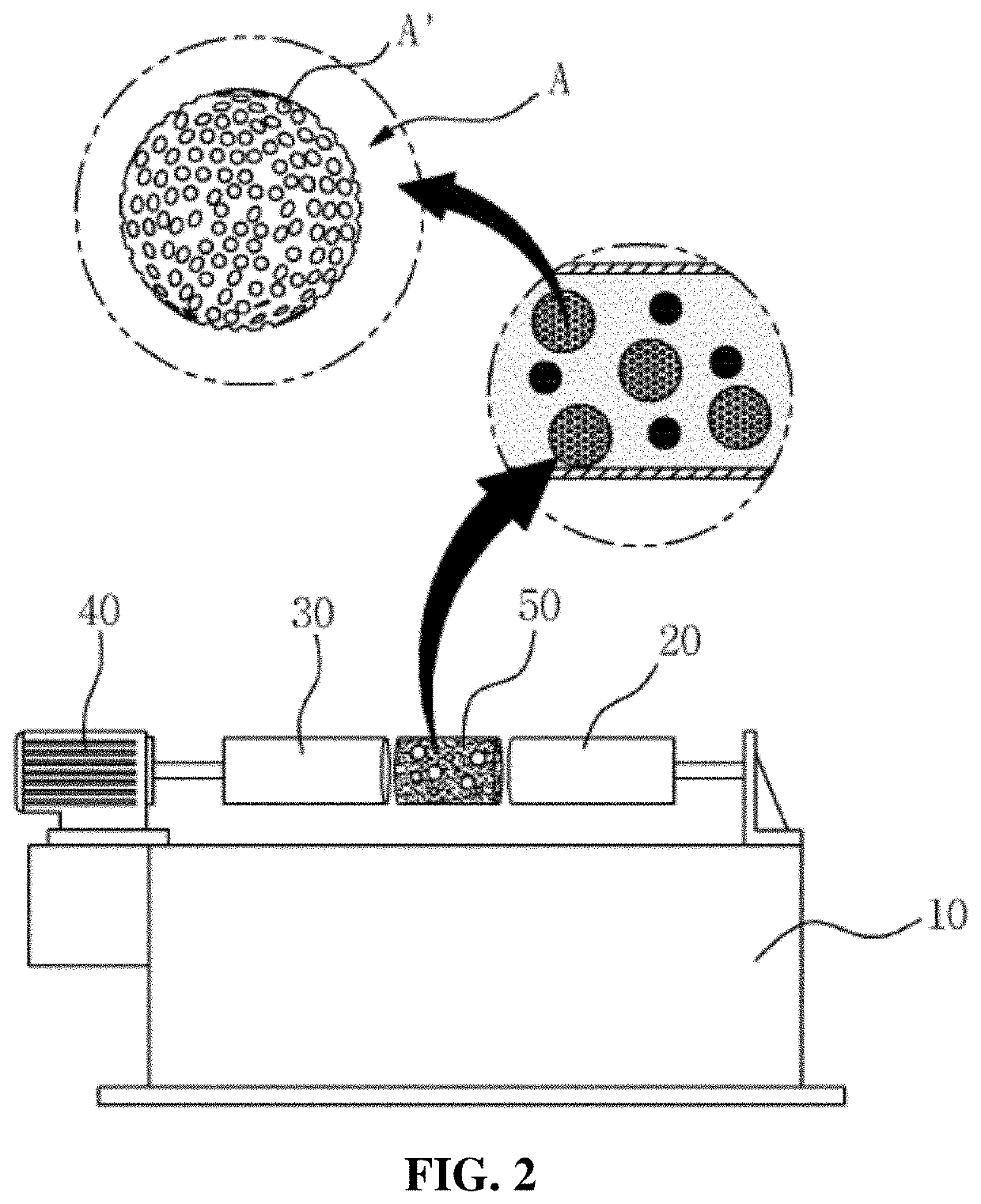Method for manufacturing zirconia slurry for forming porous surface on abutment and crown of ceramic implant and method for manufacturing implant using the same
a technology of ceramic implants and zirconia slurry, which is applied in the field of manufacturing a zirconia slurry for forming porous surfaces on abutments and crowns of ceramic implants and a method for manufacturing implants using the same, can solve the problems of no improvement in durability of veneers and bondings, and no technology having functions applicable to actual teeth of patients, so as to achieve the effect of drastically increasing the coupling force between components
- Summary
- Abstract
- Description
- Claims
- Application Information
AI Technical Summary
Benefits of technology
Problems solved by technology
Method used
Image
Examples
first embodiment
[0070]Characteristics of Zirconia Powder According to Zirconia Materials
[0071]So as to check influences of zirconium precursors as starting materials, zirconium acetate, zirconium nitrate, and zirconium chloride were used, and a 3M KOH solution as the precipitation agent was added. Next, the hydrothermal synthesis for the mixture was carried out at a temperature of 200° C. for eight hours.
[0072]Changes in the fine structures of the zirconia powder according to the kinds of the zirconium precursors are indicated by the following graph.
[0073]In the above graph, (a) is zirconium acetate, (b) is zirconium nitrate, and (c) is zirconium chloride. Through the first embodiment, all of the zirconia powder (a), (b) and (c) are synthesized to monoclinic phases, and as appreciated from the graph, if the zirconium chloride is used as the precursor, the XRD peak intensity of the zirconium chloride becomes lower and broader than those of the zirconium acetate and the zirconium nitrate. If the zir...
second embodiment
[0077]Characteristics of Zirconia Powder According to Precipitation Agents
[0078]So as to check the fine structures and crystalline phases of the zirconia powder according to kinds and concentrations of precipitation agents, a reaction temperature was fixed to 200° C., reaction time was fixed to 8 h, and KOH and NaOH as the precipitation agents were used, while their concentrations were being changed to 0.1, 1, 2, and 5M, thereby making respective zirconia powder.
[0079]Changes in the fine structures of the zirconia powder according to the kinds of the precipitation agents are indicated by the following graph.
[0080]In the above graph, (a) is a concentration of 0.1 M of a precipitation agent, (b) is that of 1 M, (c) is that of 2 M, and (d) is that of 5 M. The powder to which the 0.1 M KOH is synthesized has both of tetragonal phases and monoclinic phases, and the powder to which the 1 to 5 M KOH is synthesized has only monoclinic phases. As appreciated from the graph, the higher the c...
third embodiment
[0084]Characteristics of Zirconia Powder According to Reaction Temperatures and Time
[0085]The zirconia powder was made with zirconium chloride as a zirconium precursor through a hydrothermal process, and after 0.1 M KOH was added to the zirconia powder, the zirconia powder was synthesized with reaction temperatures of 100, 150 and 200° C. and reaction time of 4, 8, 12 and 24 h so as to check the fine structures and crystalline phases thereof according to the reaction temperatures and time.
[0086]Changes in the fine structures of the zirconia powder according to reaction temperatures are indicated by the following graph.
[0087]In the above graph, (a) is a temperature of 100° C., (b) is that of 150° C., and (c) is that of 200° C. If the zirconia powder is synthesized at a reaction temperature of 100° C., it has tetragonal phases, and spherical powder particles having sizes of about 10 nm are observed. Contrarily, if the zirconia powder is synthesized at a reaction temperature of 150° C...
PUM
| Property | Measurement | Unit |
|---|---|---|
| temperature | aaaaa | aaaaa |
| temperature | aaaaa | aaaaa |
| inner diameter | aaaaa | aaaaa |
Abstract
Description
Claims
Application Information
 Login to View More
Login to View More - R&D
- Intellectual Property
- Life Sciences
- Materials
- Tech Scout
- Unparalleled Data Quality
- Higher Quality Content
- 60% Fewer Hallucinations
Browse by: Latest US Patents, China's latest patents, Technical Efficacy Thesaurus, Application Domain, Technology Topic, Popular Technical Reports.
© 2025 PatSnap. All rights reserved.Legal|Privacy policy|Modern Slavery Act Transparency Statement|Sitemap|About US| Contact US: help@patsnap.com



